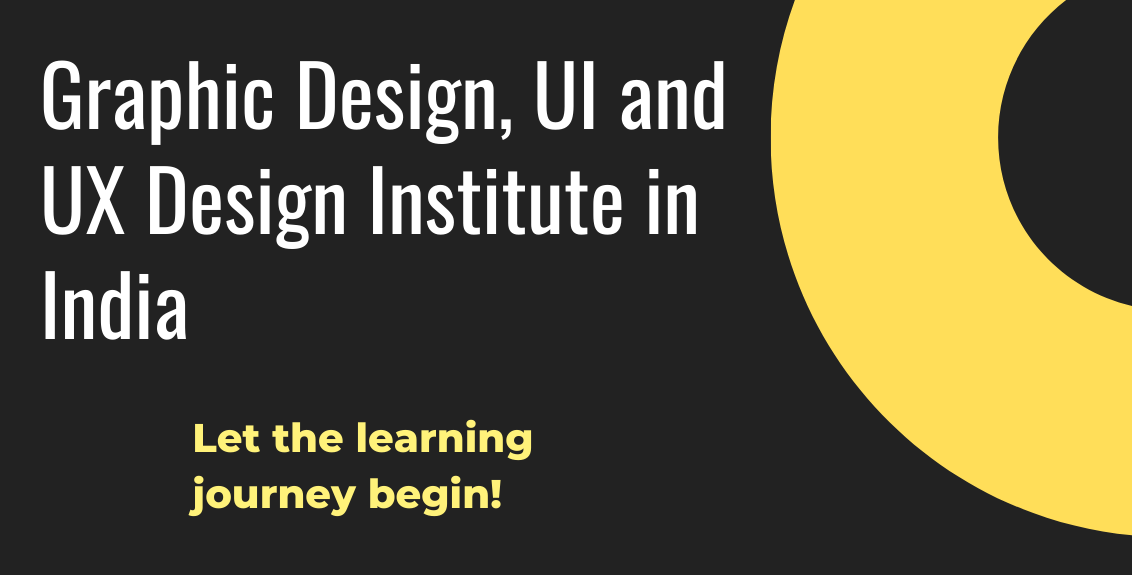Once upon a time, if you said the word “design”, the chances continued overwhelmingly convincing you were talking regarding graphic design. But in the digital world we now live in, filled as it is with bright, interactive screens, that definition has greatly developed, and the distinction between the various kinds of treatment can often be difficult for people outside or new to the design industry. Manthan Art School is the best Motion graphics and Graphic design institute in India.
Here are the three different primary forms of visual perspective, what they mean, and how they relate to one another:
Graphic Design
In a real sense, all visual design begins with graphic design. Simply put, it’s the art of determining how things should see. Graphic Designers require colors and fonts, as well as form factors (such as pictures and blocks of text) in layouts.
This can occur both online (website and mobile apps) as well as in printed matters (magazine ads, book covers, in-store displays). As so, it’s not so much regarding the means a piece looks in so common as the fact that it’s presently a static, non-interactive layout.
The need for a Graphic Designer remains to grow (Up by 7% from the previous year), and salaries are competing in this field.
In this way, we can simply define graphic design as moving about the way things look.
Static images, even when performed on and for digital media, are studied in graphic design.
UI (User Interface)
Keep in mind:
- A UI is a digital space wherever users see and understand information.
- UI Design mainly concentrates on the visual design of interactive components and, as a track, it lives nearly exclusively in digital media. Interactive components such as drop-down lists, character lists, clickable elements, animations, button styling, and also are all essential tools in UI design.
- The UI designer takes the framework and wireframes designed by the UX designer and translates them into high-fidelity, final visual deliverables before giving them off to a development or engineering team for production.
User Interface (UI) design, in opposition, particularly pertains to the design of interactive components, and as such lives almost exclusively in digital media, such as on a machine, tablet, or smartphone. Interactive components such as drop-down menus, form fields, clickable parts, animations, button styling, and also are all great tools for UI designers around the globe.
So, we can understand the meaning of UI design as growing upon and expanding the Graphic Design description, because it links to the way the things we use and communicates with the look.
UX (User Experience)
Keep in mind:
- UX Design is the all-encompassing sense of a user as they communicate with a product or assistance to reach a goal.
- User experience design is the method of applying a user-centered design approach to understanding and meeting the requirements of users with an experience that’s both usable and delightful.
- UX designers are problem-solvers for products, marketing, content, management, and especially for—you guessed it—people.
And then there’s UX. UX design is different from both UI and graphic design in that it collects on the logic and structure of the components you see and communicate with. UX designers typically create wireframes, prototypes, site maps, plans, and other UX artifacts for the UI team.
UX essentially takes position in two distinct phases: research and validation. During the research phase, the UX designers use a mixture of tools and methods to better understand their intended users. Competitive analysis, user accounts, persona work, wireframing, heuristic review, and journey flows may all be involved.
And after the Here, UX designers make usability/pain point research to decide if the product is giving the desired result.
the outcome has started, then becomes validation. Here, UX architects perform a usability/pain point study to determine if the result is giving the desired result. If not, refinements and improvements are made based on user data to make the result better and more effective. Catching problems with usability early on checks more costly redesigns/reiteration later.
The UX design process serves as a framework that allows a designer to define a problem, ideate potential resolutions for that problem, and validate the solutions they create. There are many design frameworks in the world, but we’ve found the Stanford study pattern is excellent for introducing UX to our designers.
The 5 steps of the Stanford study pattern:
- Empathize
The designer looks at the view encompassing the puzzle by getting it from as many perspectives as potential.
- Define
The designer pulls insights from the study to define the particular problem and challenge to work for, and who to design for.
- Ideate
Once the problem is recognized, the designer’s goal is to “go wide” with concepts and outcomes, creating many ideas—good, bad, silly, or impossible—that can be prioritized and explored further.
- Prototype
This stage sees the discount down from many answers to one; the goal isn’t to get it perfect but to be graspable by others. The criterion allows the designer to identify possible pain points, considerations, and areas of improvement.
- Test
The designer gathers comments and feedback to design something truly thoughtful on every front, and purposeful for their audience.
Lastly, wireframing is a very valuable skill for UX designers.
Which kind of design is right for you?
While there are many varieties of artists, there’s no doubt that UI/UX designers are in the greatest interest at the moment. Spanning the gap between the way people look and the way they operate, these designers are at the forefront of building fantastic new digital goods for people.
And as the need for these goods grows so does the need for good UX/UI designers who, in turn, can lead to far more expensive salaries. Graphic design, in comparison, is inactive and not reflective of technological progress. The job market is also contracting for this type of design over more technology-focused design jobs.






